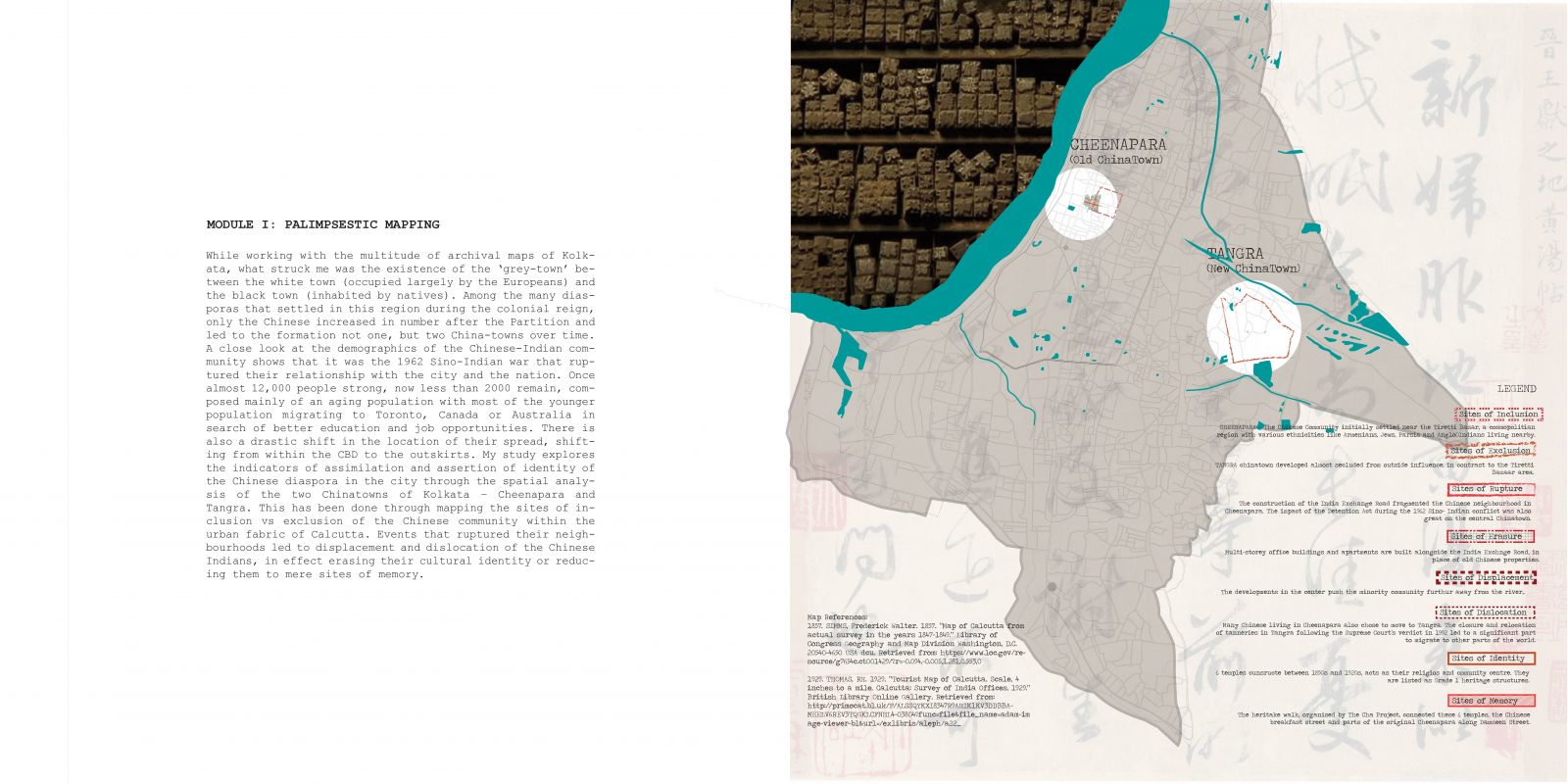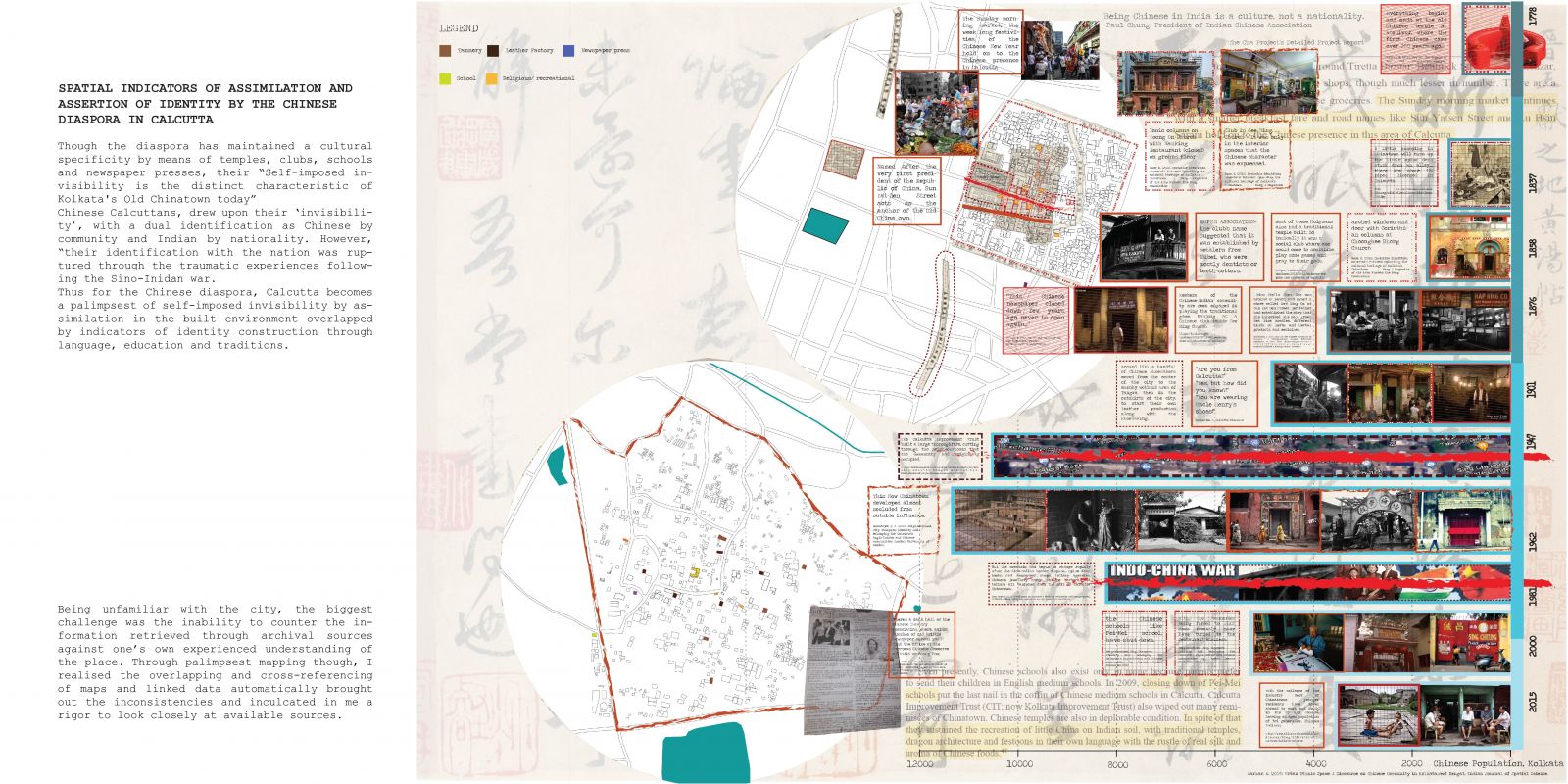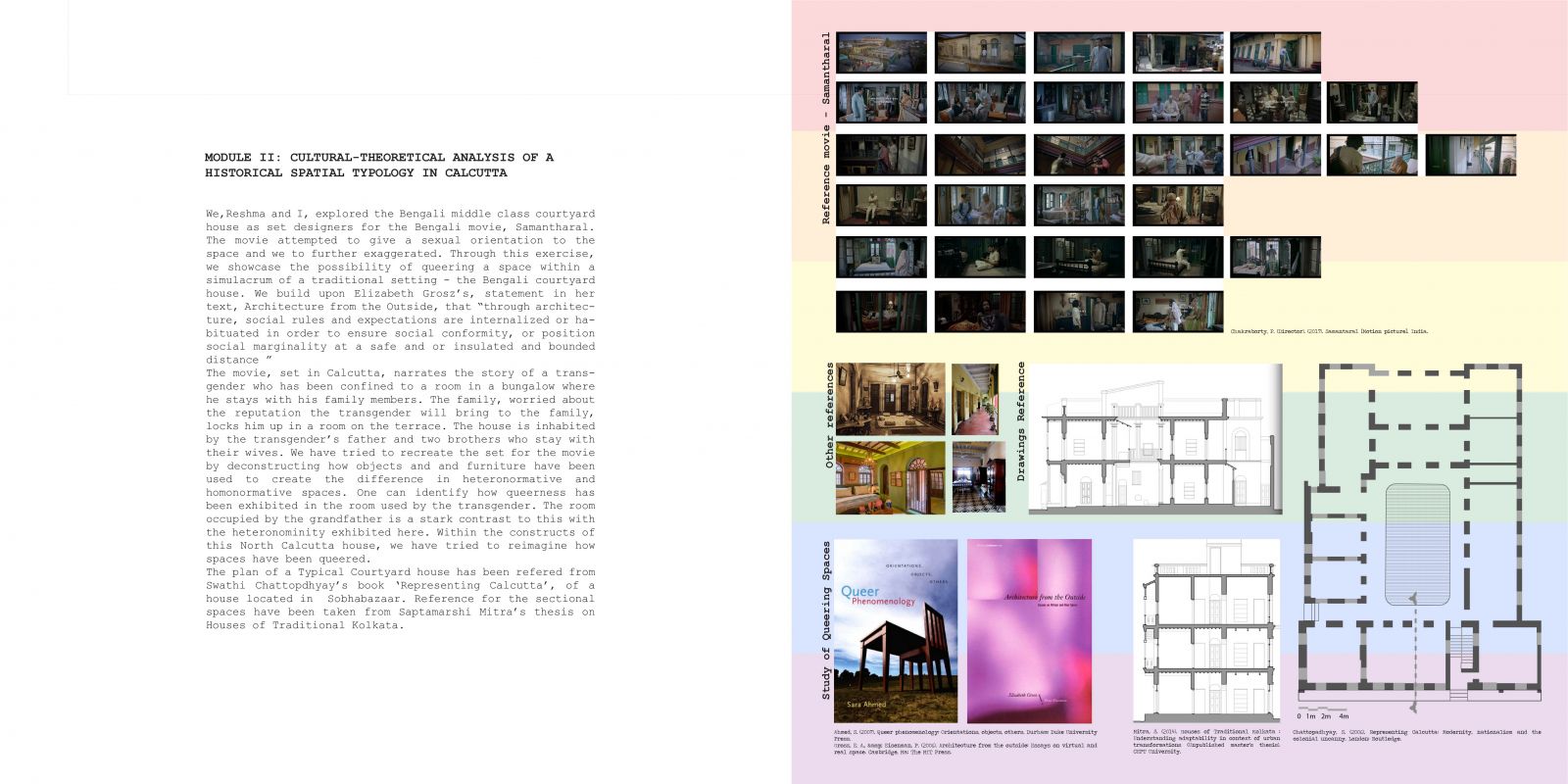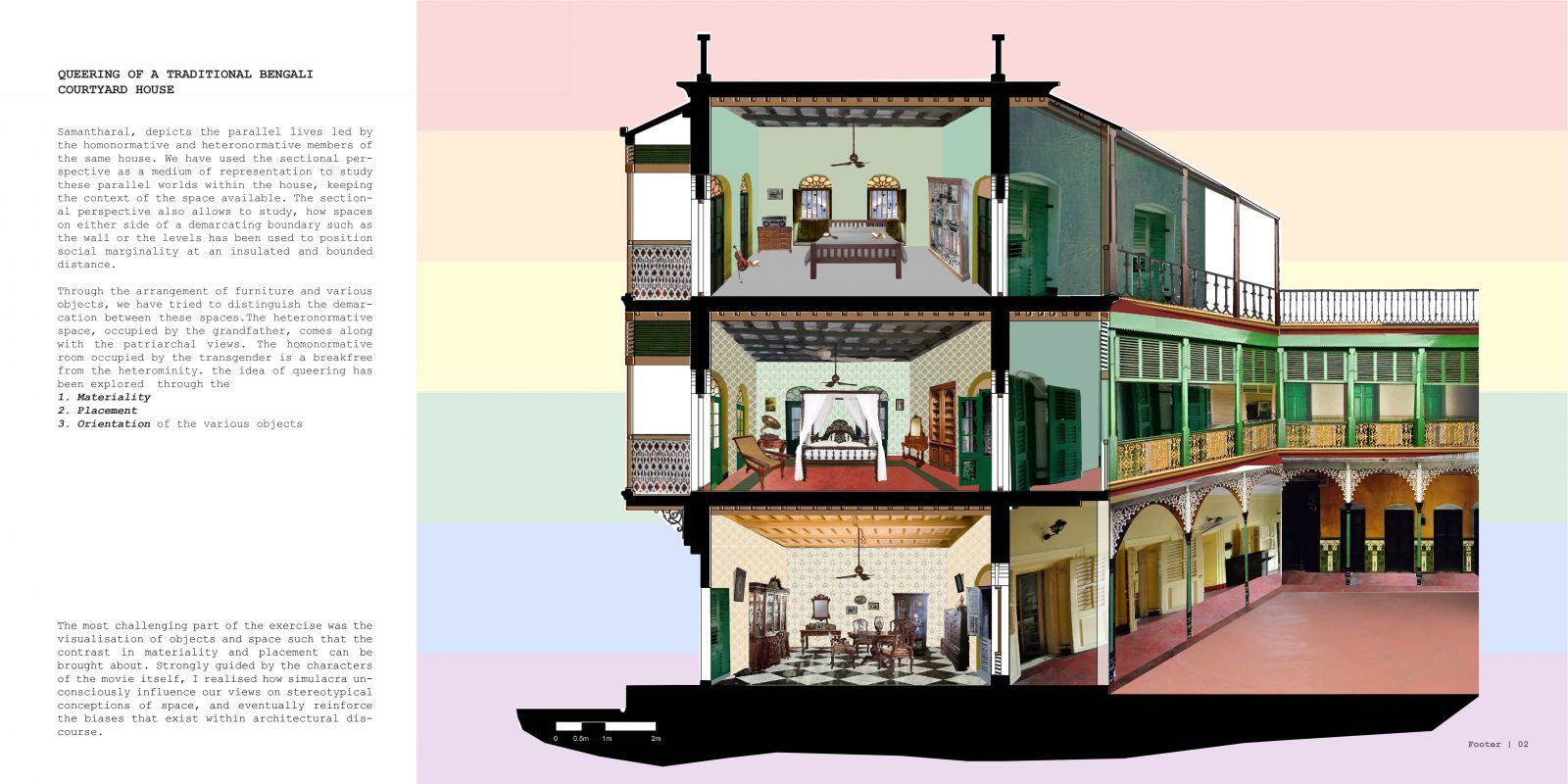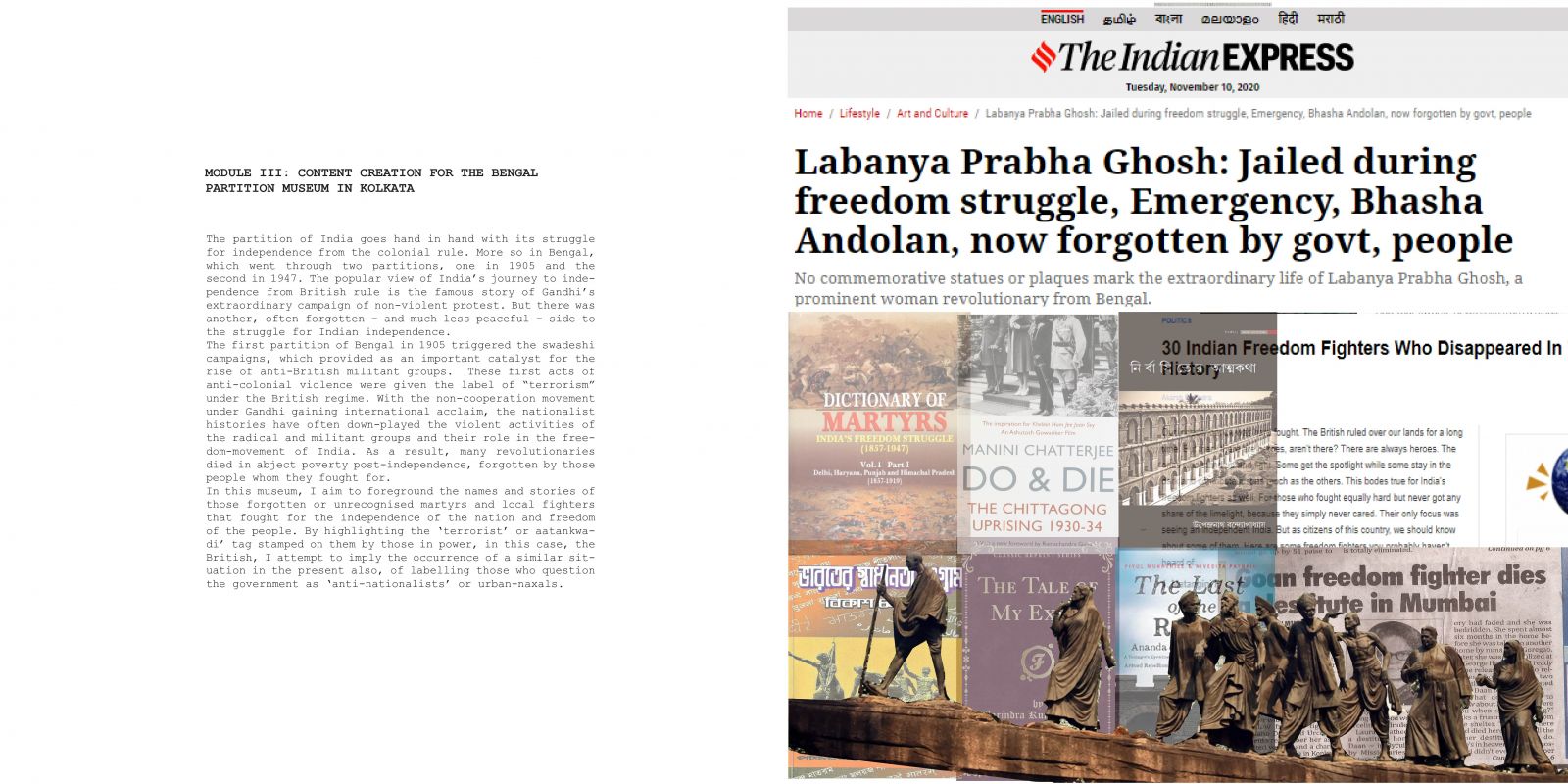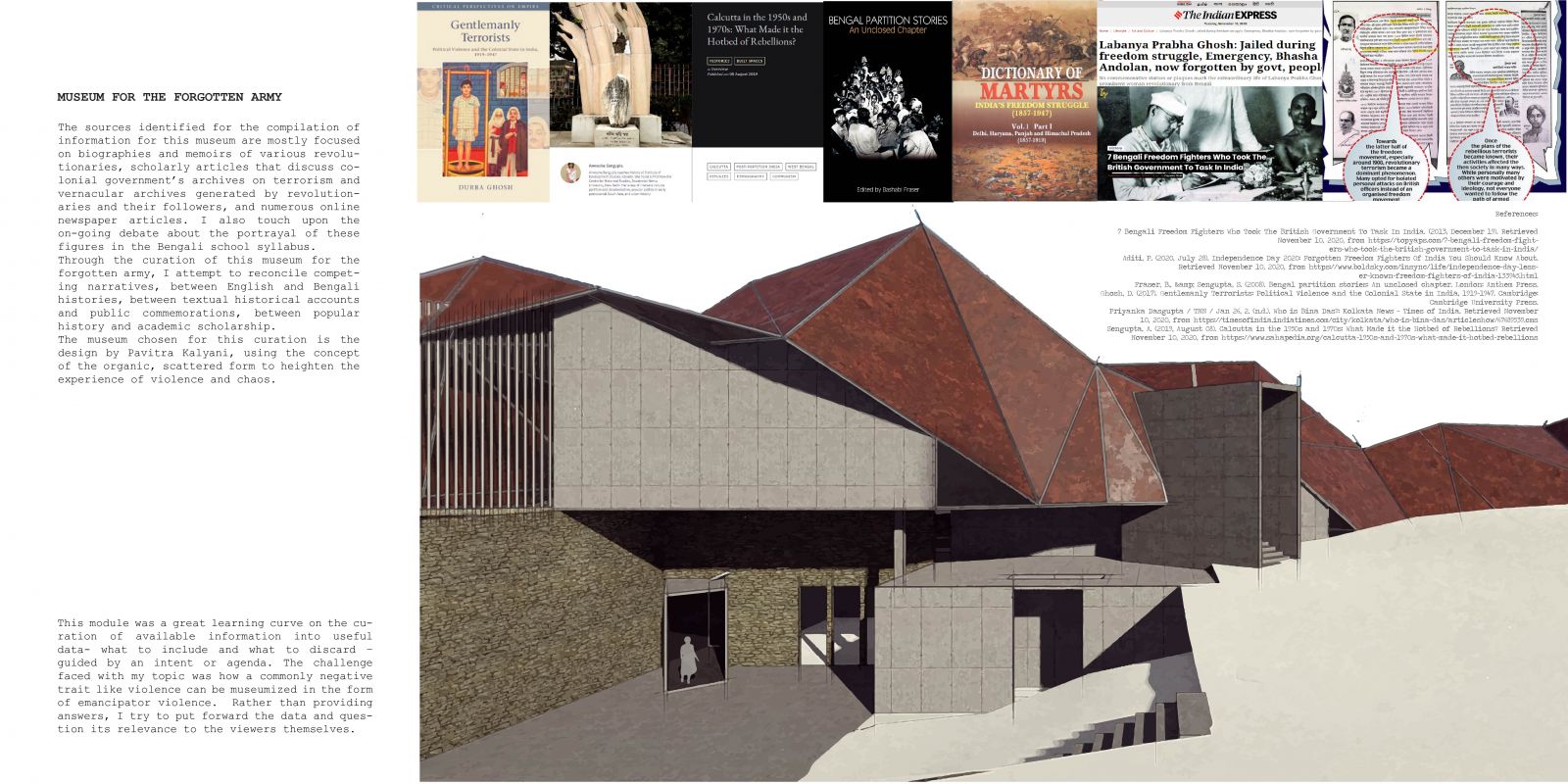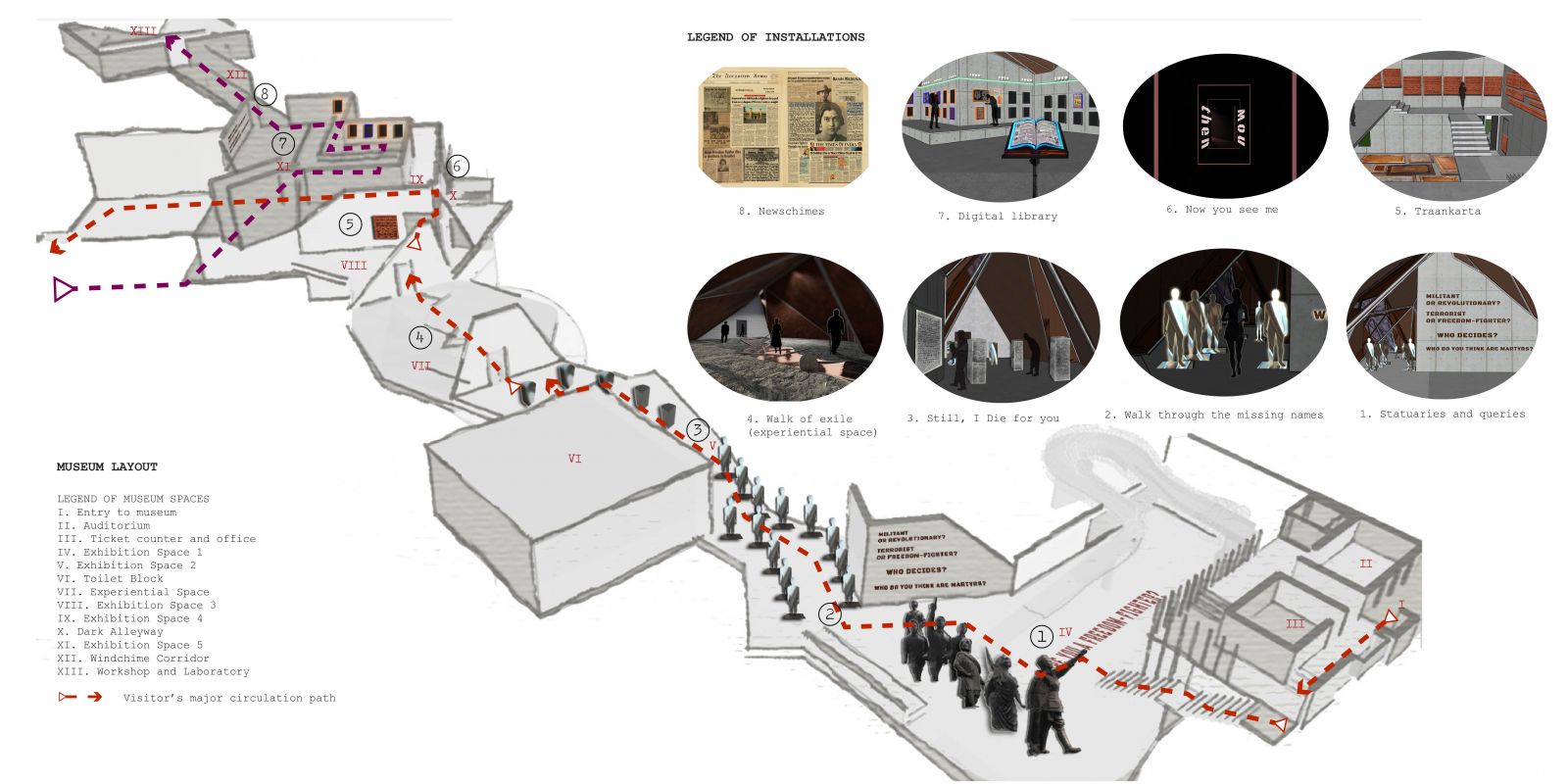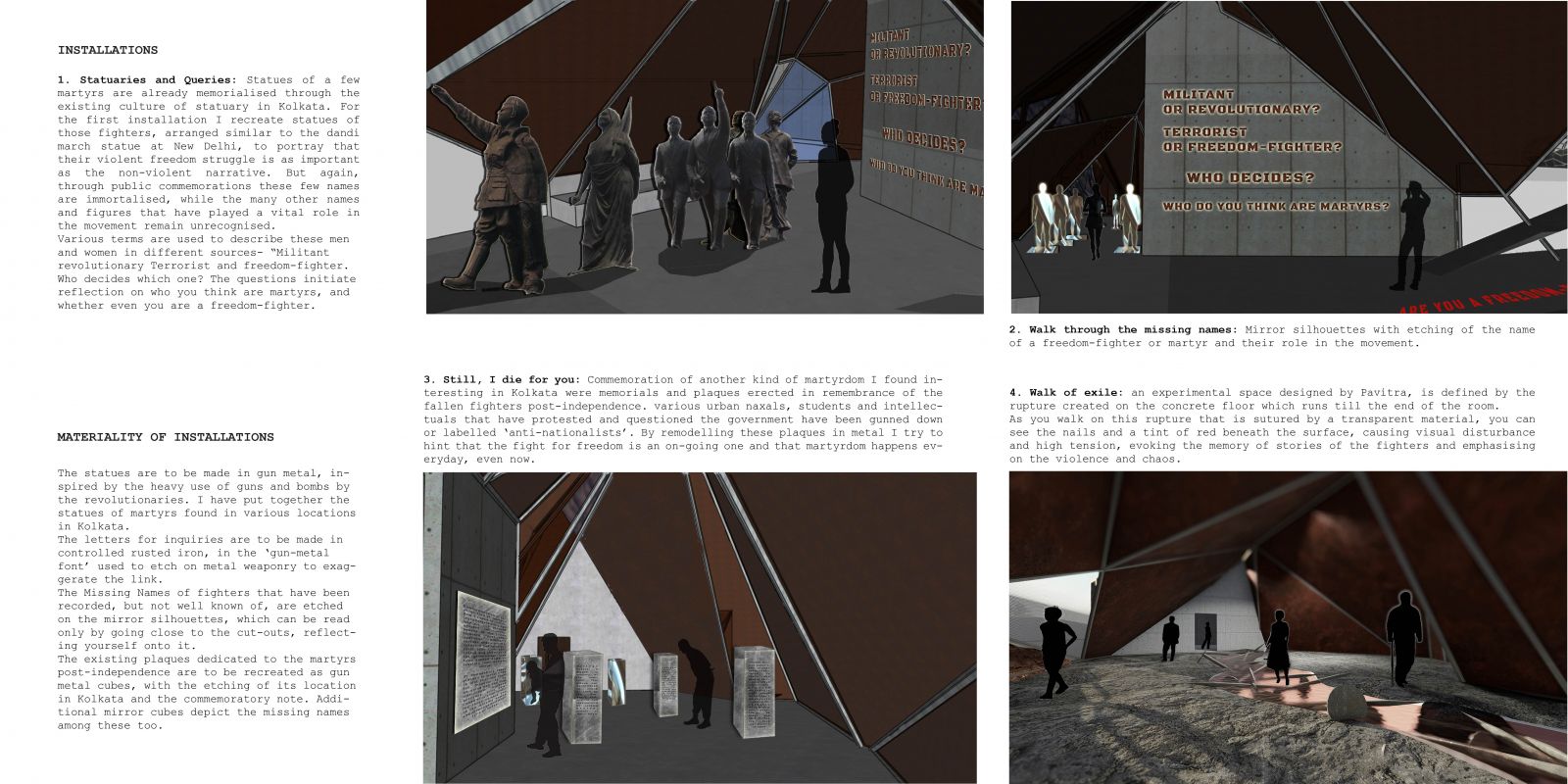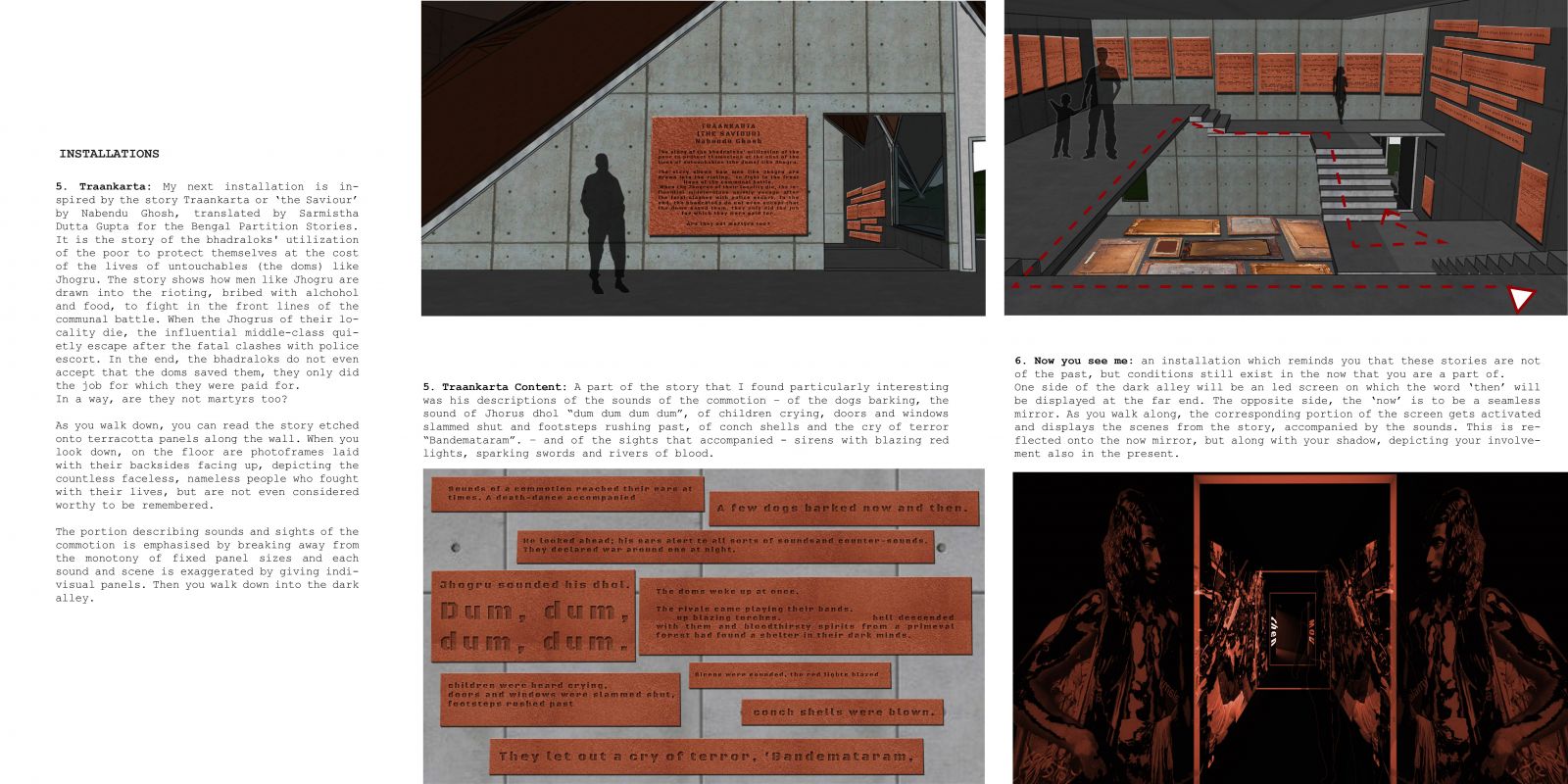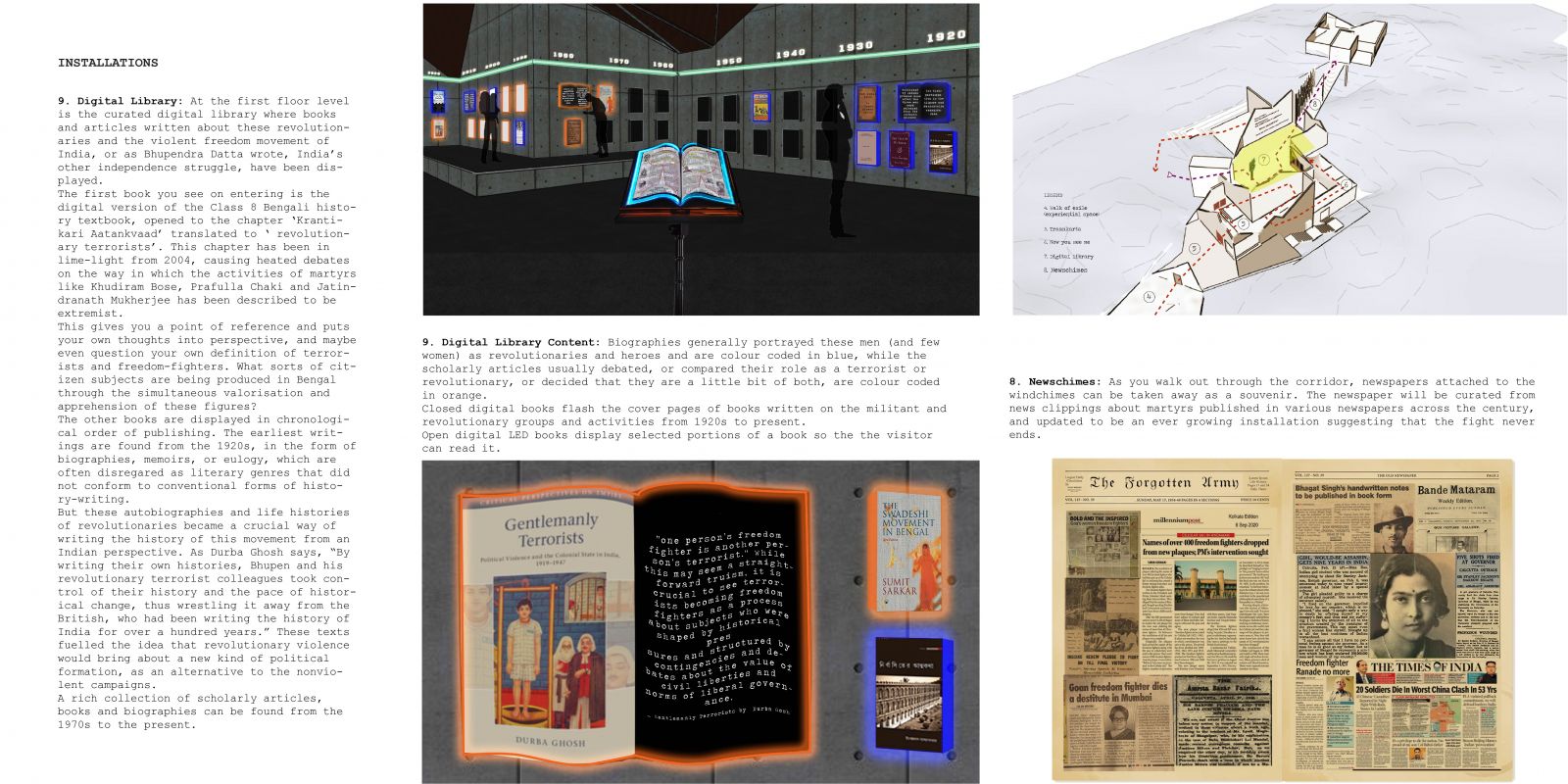Your browser is out-of-date!
For a richer surfing experience on our website, please update your browser. Update my browser now!
For a richer surfing experience on our website, please update your browser. Update my browser now!
Through the three modules, I have tried to contest the dominant narratives by foregrounding records of marginalized groups in Kolkata, and thus decentralise the authoritative accounts.In the first module, I map the Chinese diaspora, for whom Calcutta becomes a palimpsest of self-imposed invisibility, by assimilation in the built environment overlapped by indicators of identity construction through language, education and traditions. In the second module, we visualize the possibility of queering a space within a simulacrum of a traditional setting - the Bengali courtyard house.Through the curation of the contents for the Bengal Partition Museum, I aim to foreground the names and stories of those forgotten or unrecognized martyrs and local fighters that fought for the independence of the nation and freedom of the people. By highlighting the ‘terrorist’ or aatankwadi’ tag stamped on them by those in power, in this case, the British, I attempt to imply the occurrence of a similar situation in the present also, of labeling those who question the government as ‘anti-nationalists’ or urban-naxals.
